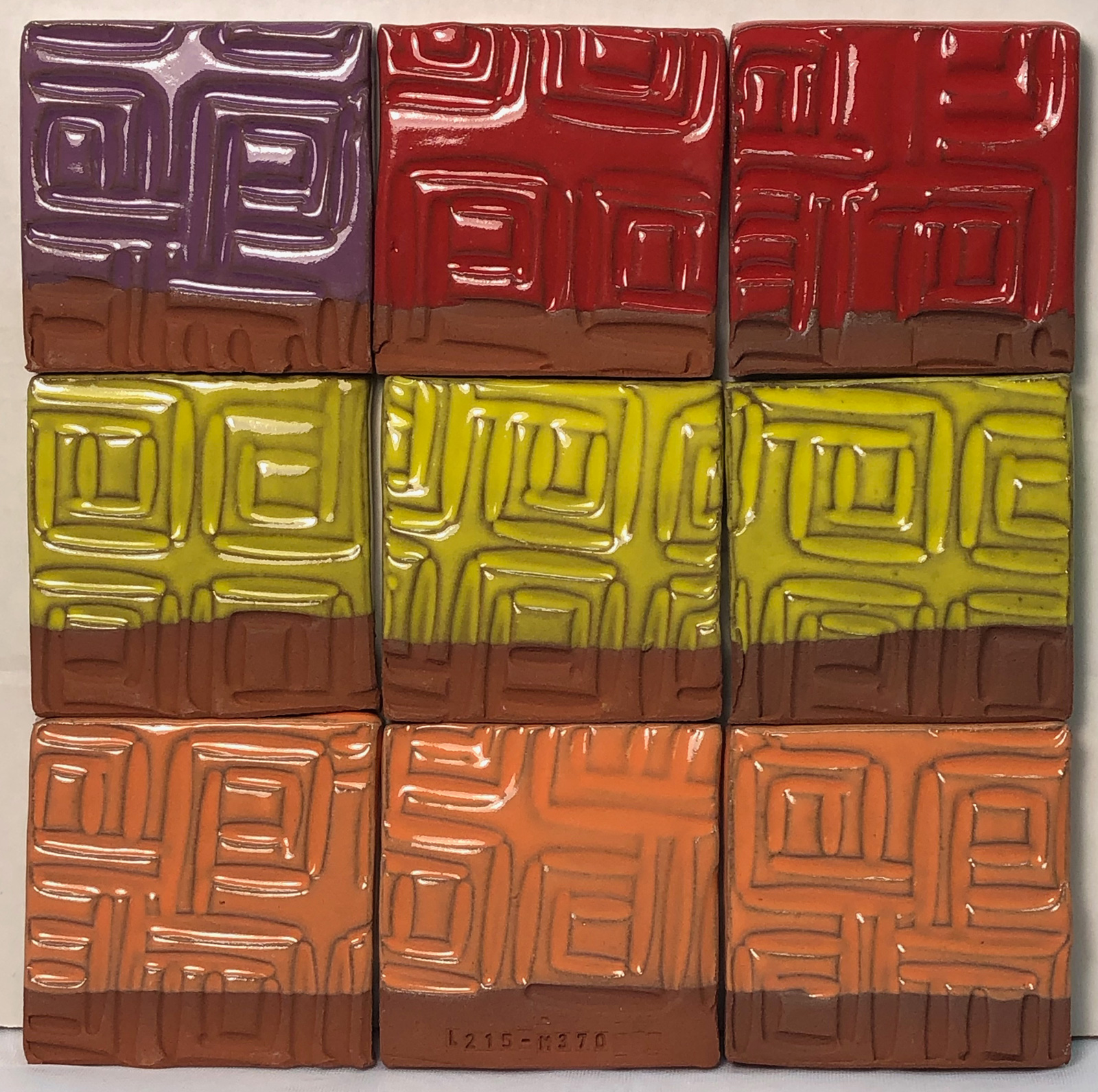| Monthly Tech-Tip | No tracking! No ads! | |
Cone 1
The Cone 1 range is commonly employed in industry for durable products (e.g. structural). To a potter it does not sound possible that stoneware-strength could be achieved at cone 1, but the secret is terra cotta clays. While not vitreous at low temperatures (e.g. cone 06-04), they rapidly mature when fired higher. They trend from light red to dark brown through their firing range, cone 1 often being near the upper end of that. Clay color thus limits the type of ware possible. That being said, cone 1 glazes have better hiding power and even bright colors can perform on the dark-burning bodies. Terra cotta clays are available almost everywhere on the planet, most are plastic. By cone 02 many are approaching the temperature at which they are most vitreous, by cone 2 they are beginning to melt. That means that most low temperature red-burning clays are over-fired at cone 1. But this is not actually a problem. The reason is that their workability is almost never ideal, they are either too short or too plastic. These two issues, plasticity and firing temperature, can be fixed by an addition or one material. If the red clay has low plasticity, then add ball clay (it is both refractory and plastic). If it has high plasticity, add quartz (it is refractory and effectively cuts plasticity). A stoneware clay addition might also be feasible for small plasticity adjustments.
Cone 1 is thus somewhat of a "sweet spot", low enough so these earthenware clays (with small additions) are not too vitreous, but high enough that boron glazes (made using common frits) still melt well. A potter actually has a simple way to make a cone 1 body: Wedge together a terra cotta and a middle temperature red-burning body (adjust proportions according to test results).
Related Information
Cone 1-4 stoneware by mixing a low and medium temperature body

This picture has its own page with more detail, click here to see it.
These tiles are a 50:50 mix of Plainsman L215 and M390. They are fired at cone 1, 2.5 &4 (columns 1,2,3). The glaze is G3806N (v1) with stains at 10% concentrations. That glaze is a fluid-melt for cone 6, but it performs nicely down to cone 1 and even lower. There is no visible crazing and the iron body is stoneware-strength. The firings were only held for 10 minutes at cone (no slow cool). These coloured glazes are also less "muddied" by the iron in the body than would be the case at cone 6. This is a really amazing result. Red-burning bodies can be difficult at cone 6 (if fired too high the red color is lost, if fired too low they are too porous). If you do not have the frit for the N version, try G3806E or G3806F.
A terra cotta clay fired from cone 06 (bottom) to 4

This picture has its own page with more detail, click here to see it.
Terra cotta clays mature rapidly over a narrow range of temperatures, showing dramatic changes in fired color, density and strength. These Plainsman BGP SHAB test bars are fired (bottom to top) at cone 06, 04, 03, 02, 2 and 4. At cone 06 (1830F/1000C) it is porous and shrinks very little. But as it approaches and passes cone 03 (1950F/1070C) the color deepens and then moves toward brown at cone 02 (where it reaches maximum density and strength). However, past cone 02 it becomes unstable, beginning to melt (as indicated by negative shrinkage). The second bar up, cone 04, is a good compromise: Adequate strength, good color and low shrinkage. This “single suitable temperature” is completely different than white burning low fire bodies, they are refractory.
Inbound Photo Links
 Low fire red cones inhabit their own volatile world |
| By Tony Hansen Follow me on        |  |
Got a Question?
Buy me a coffee and we can talk

https://digitalfire.com, All Rights Reserved
Privacy Policy
